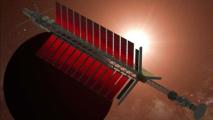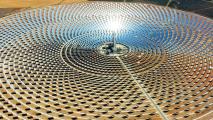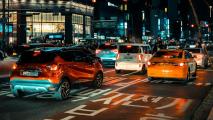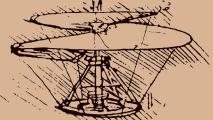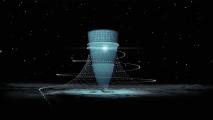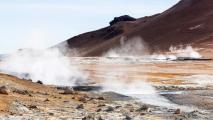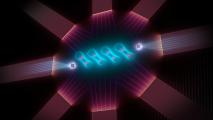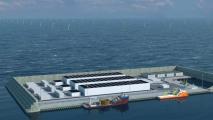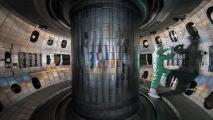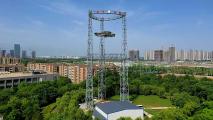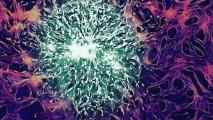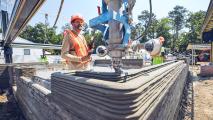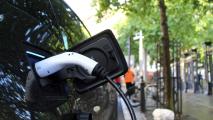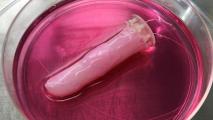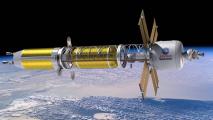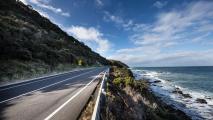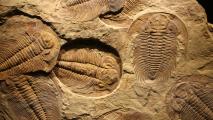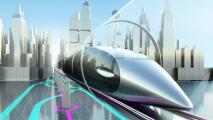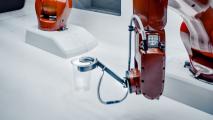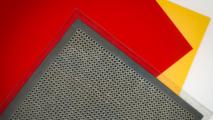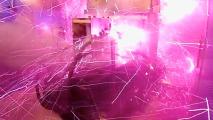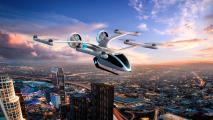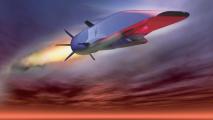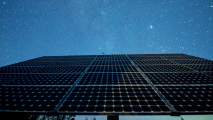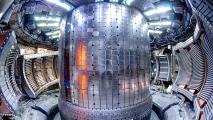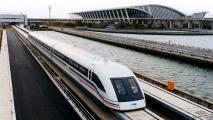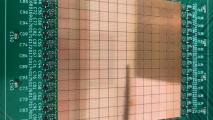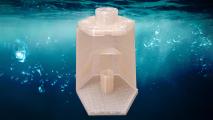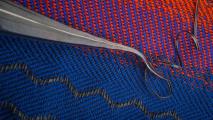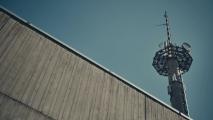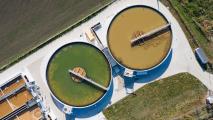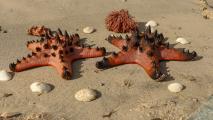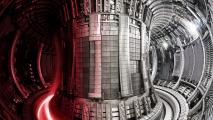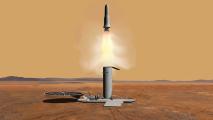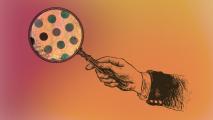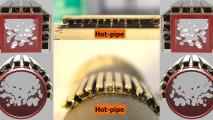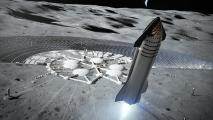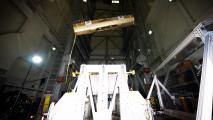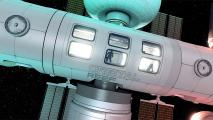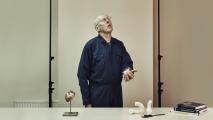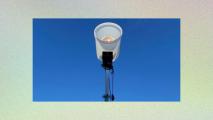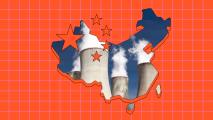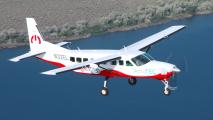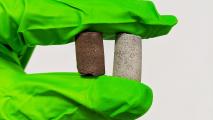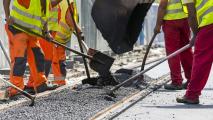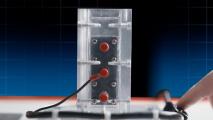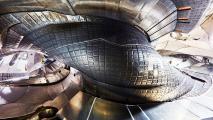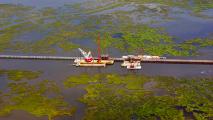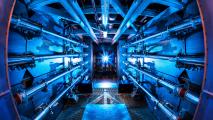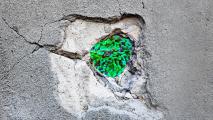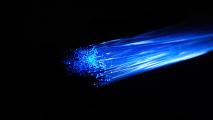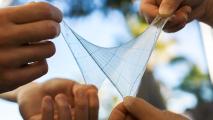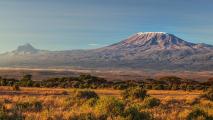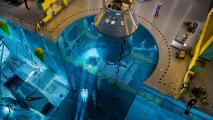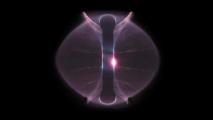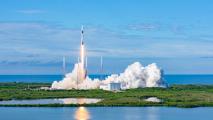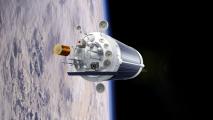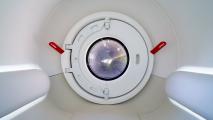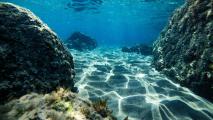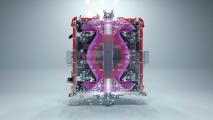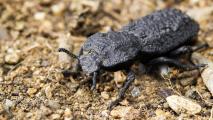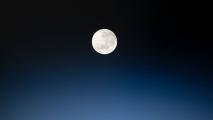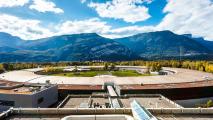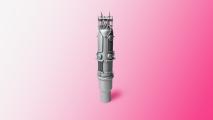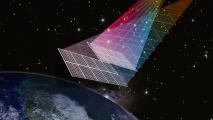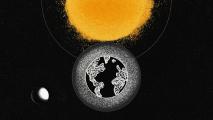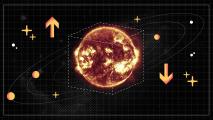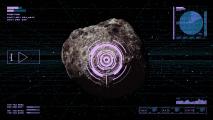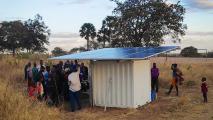Field: Engineering
The challenges of wireless farming technologies – like transmitting data through mud
The Agricultural Internet of Things involves technologies such as wireless underground communications and antennas in soil.
A large solar storm could knock out the power grid and the internet
Typical amounts of solar particles hitting the earth’s magnetosphere can be beautiful, but too much could be catastrophic.
NASA-funded scientist says “MEGA drive” could enable interstellar travel
The mega drive might provide enough thrust for a spacecraft to travel near the speed of light using only electricity, says one physicist.
Synthetic cartilage is now stronger than the real stuff
Using a heating process, Duke researchers have created a synthetic cartilage hydrogel that can outperform the real thing.
Gates-backed company is using robots to build mega solar farms
With new capital from a Bill Gates-backed VC firm, Terabase wants to automate solar farm construction.
Russians reportedly building a satellite-blinding laser. How would it work?
If Russia is able to build the laser, it would be capable of shielding a large part of the country from the view of satellites.
MIT’s new algorithm for self-driving cars is open-source
MIT scientists unveil the first open-source simulation engine capable of constructing realistic environments for autonomous vehicles.
15th century futurism: Leonardo da Vinci’s famous helicopter design finally takes flight
Da Vinci dreamed up a helicopter 400 years before they actually existed. Now, engineers have brought his design to life, but with a twist.
The sci-fi plan to create artificial gravity on the moon, Mars
To create artificial gravity for off-world explorers, Japan plans to build spinning, cone-shaped facilities on the moon and Mars.
Tapping into the million-year energy source below our feet
Quaise Energy wants to repurpose coal and gas plants into deep geothermal wells by using X-rays to melt rock.
Engineers build LEGO-like artificial intelligence chip
Engineers have created an AI chip with alternating layers of sensing and processing elements that can communicate with each other.
Engineers create world’s first carbon-neutral cement out of algae
Cement production currently accounts for 8% of global carbon emissions.
Australian scientists put the quantum world on a microchip
A first-of-its-kind quantum simulator could lead to the creation of never-before-seen materials powered by quantum phenomena.
This artificial island will power 3 million European households
Denmark is building an artificial island in the North Sea that will eventually be capable of meeting all the nation’s electricity needs.
New nuclear fusion reactor design may be a breakthrough
Nuclear fusion reactors have existed for years, but none of them are able to sustainably produce energy yet.
China successfully tests space-based solar power components
Researchers at China’s Xidian University have successfully tested a proof-of-concept for collecting solar power via satellites.
Engineers develop nanoparticles that cross the blood-brain barrier
Tested using a new brain tissue model, the particles may be able to deliver chemotherapy drugs to cancer patients.
Why Africa’s newest super-bridge is in the continent’s weirdest border zone
The Kazungula Bridge has turned a cartographic near-miss into a geopolitical marvel, with a chance to renew Africa's economy.
Virginia launches world’s biggest 3D-printed housing project
Construction company Alquist 3D plans to build 200 3D-printed houses over the next 5 years through Project Virginia.
Electric car supplies are running out
People who aspire to own a brand new electric vehicle will struggle to move forward. Will this also slow down the journey to net-zero?
Self-healing robot skin created out of human cells
University of Tokyo researchers have created a living skin, made from human cells and collagen, for a robotic finger.
US plans to put nuclear-powered spacecraft in orbit by 2026
Nuclear thermal propulsion systems could power missions to Mars, help defense satellites evade attacks, and more.
Recycled tires can act as sunscreen for roads
Australian researchers blasted bitumen with a UV machine to discover how used tires can act as road “sunscreen.”
Ancient creatures inspire record-breaking new technology
Inspired by the ancient compound eyes of the trilobite, researchers have created a record-breaking camera with a depth of field of just over a mile.
Elon Musk’s Hyperloop is possible. How badly do we want it?
The Hyperloop is physically possible, but engineering challenges will make its construction difficult. Also, accidents would be catastrophic.
Ultrathin fuel cell uses the body’s own sugar to generate electricity
Batteries have a limit to how small they can be made, and they need to be charged. What if you could power your own medical device?
New MRI machine will unlock better images for medicine
A new MRI machine with a larger opening and a weaker magnetic field overcomes many shortcomings of other scanners.
From robotic dogs to magnetic slime: 6 ways robots are helping humans
Robots are helping humans in a growing number of places - from archaeological sites to disaster zones to sewers.
Researchers develop a paper-thin loudspeaker
The flexible, thin-film device has the potential to make any surface into a low-power, high-quality audio source.
Scientists blow up their lab after creating strongest magnet ever
Scientists knew that it would probably explode, but they did not expect to reach such a record magnetic field.
The Large Hadron Collider is back online
The world's biggest particle accelerator, the Large Hadron Collider (LHC), is back online after a three-year hiatus.
Chevrolet is electrifying the Corvette
GM has announced plans to bring the Corvette roaring into the electric vehicle market.
The next big disruption is coming: How cities can prepare for flying cars
Urban Aerial Mobility - or 'flying cars' - could present a more flexible way for cities to invest in future infrastructure.
How hypersonic missiles work and the unique threats they pose
Hypersonic systems have been in use for decades, but the latest ones are highly sophisticated new technology.
New solar panels generate electricity long after the sun sets
Engineers at Stanford University have created a solar cell that generates electricity at night by exploiting the process of radiative cooling.
Nuclear fusion hit a milestone thanks to better reactor walls
A team of scientists have shattered the record for the amount of energy produced during a controlled, sustained fusion reaction.
This new “levitating” Chinese train will be the fastest in the world
It would only take 2.5 hours to travel from Beijing to Shanghai, a journey of more than 1,000 km or 620 miles.
Credit card-sized device focuses terahertz energy to generate high-resolution images
The advance may enable real-time imaging devices that are smaller, cheaper, and more robust than other systems.
High schoolers create $1 filter to remove lead in water
Maryland high schoolers have created a filter that removes lead in water. It costs just $1 and alerts users when it needs to be replaced.
Swiss scientists are making jet fuel from sunlight and air
The fuel's reliance on sunlight makes desert areas prime land for production sites, leaving valuable agricultural land available for food.
A fabric that “hears” your heart’s sounds
An MIT team has designed an “acoustic fabric" to convert sound vibrations into electrical signals.
What is 3G and why is it being shut down? An electrical engineer explains
3G networks are built using completely different equipment and algorithms than its newer replacements.
Win-win: we can make fertilizer by purifying wastewater
Stanford engineers have developed a cost-effective way to convert a toxic byproduct of a wastewater filtration process into useful chemicals.
Diamond-like starfish skeleton unlike any discovered in nature
The skeleton of the knobby starfish has a structure unlike any other found in nature so far, and it could inspire new lightweight ceramics.
“Fly ash” contains rare earth elements needed for electronics
A new method for extracting rare earth elements from fly ash could help end the U.S.’s reliance on China for the valuable metals.
Fusion reactor breaks 24-year-old nuclear record
A new record set by the world’s largest nuclear fusion reactor is giving researchers confidence we’re on the path to usable fusion energy.
NASA: Lockheed Martin will build the Mars Ascent Vehicle
NASA’s Mars Ascent Vehicle, a first-of-its-kind rocket capable of launching from the surface of Mars, will be built by Lockheed Martin.
MIT’s new material is stronger than steel and as light as plastic
A new material out of MIT that’s stronger than steel and as light as plastic could one day coat smartphones, hold up bridges, and more.
Flexible device hugs pipes, turning waste heat into electricity
Penn State researchers have developed a thermoelectric generator that efficiently converts waste heat into electricity.
SpaceX’s Starship is ready for its first trip into space
SpaceX's Mars-bound Starship — the largest spacecraft ever built — is expected to undergo its first orbital test flight in March 2022.
IBM and Samsung unveil breakthrough microchip design
IBM and Samsung have unveiled a new microchip design that promises radically faster, more efficient semiconductor chips.
NASA tosses rockets to prepare for Mars sample return
NASA is developing a system for the Mars Sample Return mission that tosses a rocket into the air just prior to ignition on Mars.
What comes after the ISS?
NASA is investing more than $400 million to help private companies develop space stations that could one day replace the ISS.
This engineer fixed his own heart
When Tal Golesworthy was told he was at risk of his aorta bursting, he wasn’t impressed with the surgery on offer – so he came up with his own idea.
Wireless power demonstration overcomes a major hurdle
Engineers have made optical beaming work in a proof-of-concept experiment. Their demonstration showed that wireless power could be just around the corner.
China’s experimental thorium reactor is ready for testing
An experimental thorium reactor in China could greatly expand the number of people who can benefit from clean nuclear energy.
Series|
Make It Count
$25 flights and zero emissions: How electric planes could change air travel
In partnership with Million Stories
You could be flying electric by 2023.
Mars colonies could be built from astronauts’ blood and urine
To minimize the cost of building Mars colonies, astronauts could make concrete using space dust and their own bodily fluids.
UK building road with “wonder material” graphene
The United Kingdom is launching a world’s first trial to test whether adding graphene to recycled asphalt can increase a highway’s lifespan.
Series|
Make It Count
The man hacking hot water to save the planet
In partnership with Million Stories
The U.S. Energy Department estimates that tankless water heaters can be up to 34% more efficient than conventional storage water heaters - cutting your annual heating costs by 40%.
Twisty nuclear fusion reactor gets twice as hot as the sun
Physicists optimized a nuclear fusion reactor to overcome a problem that causes heat loss and prevents the device from sustaining fusion.
Rule-bending engineers protect New Orleans from Hurricane Ida
By going beyond the "100-year storm" standard for flood protection, U.S. engineers helped minimize the impact of Hurricane Ida on New Orleans.
Nuclear fusion experiment puts ignition within our grasp (Updated)
Scientists appear on the brink of achieving nuclear fusion ignition, bringing the dream of near-limitless clean energy closer to fruition.
Microbes inside concrete can warn us about rotting infrastructure
By learning about the bacteria that live inside concrete, scientists hope to develop early warning systems about damage.
Olympic swimmers get speed boost from pool engineers
We already know that Olympic swimmers are fast, but Olympic swimming pools can be engineered to be “fast,” too.
Japan breaks world record for fastest internet speed
Engineers in Japan have set a new world record for fastest internet speed — 319 Tb/s — using a specially developed fiber-optic cable.
Printing embedded tech in artificial skin just got easier
Stanford researchers present new chemical method for mass-producing stretchable transistor arrays that can be printed in artificial skin.
Oxford study: Move copper mining to dormant volcanoes
A more sustainable approach to copper mining may be digging wells under dormant volcanoes to suck out the metal-containing fluids below them.
The world’s deepest pool will host astronaut training in the UK
U.K. company Blue Abyss has submitted plans to build a massive aquatic facility in Cornwall, England, and its centerpiece will be the world’s deepest pool.
New nuclear fusion test overcomes “exhaust problem”
The UK’s MAST Upgrade nuclear fusion experiment appears to have solved the “exhaust problem,” a major hurdle to harnessing fusion power on Earth.
Reusable rockets: Making space more affordable
Reusable rockets, like those developed by SpaceX, are ushering in a new, cheaper era in space exploration
Scientists want to use a laser beam to control lightning
A new laser beam may allow scientists to control lightning, allowing them to divert a bolt to strike where it’s less likely to cause a wildfire.
The plan to convert space debris into labs for astronauts
Space services company Nanoracks plans to convert space debris into orbiting “Outposts” that could serve as hotels, research parks, and more.
Experimental hyperloop pod transports passengers for first time
Virgin Hyperloop has transported two passengers in a hyperloop pod, a milestone in the development of the high-speed transportation system.
Mapping the ocean floor with an underwater "GPS"
MIT researchers have developed an underwater, sound-based navigation system that could make it possible to map the entire ocean floor.
Nuclear fusion machine turns on for the first time
A new spherical tokamak in the U.K. could overcome one of the biggest hurdles to nuclear fusion power: the “exhaust problem”
The "Iron Man" of beetles could inspire super-durable cars and planes
The diabolical ironclad beetle could be the next big thing in biomimicry, inspiring the design of extra-durable planes, cars, and more.
Nokia is building a 4G network on the moon
As part of NASA's "Tipping Point" program, Nokia will establish a 4G network on the moon to help astronauts communicate with each other and Earth.
Super bright X-ray lets doctors see the atoms inside viruses
The x-ray beams produced by the Extremely Brilliant Source, a new synchrotron, are so bright, they can be used to create images with atomic-level detail.
Mini nuclear reactors take big step forward in the US
NuScale Power’s small modular reactors generate less energy than full-sized nuclear reactors, but they might also be cheaper and safer.
24/7 solar power is on the horizon
Researchers at the Air Force Research Laboratory are planning new solar power tech that collects energy in outer space and laser-beams it back to Earth.
Series|
Guardians of the Apocalypse
Geoengineering: Our last defense against climate change
Reflecting the sun’s rays is a proposed last-ditch effort to mitigate the effects of global warming. This Harvard research team is trying to better understand the potential risks in order to save the planet.
Move the sun, save the earth: the plan to relocate our solar system
This stellar engine could harness the power of the sun to drag our solar system throughout the galaxy, preventing a catastrophic collision.
Series|
Guardians of the Apocalypse
NASA’s plan to stop an asteroid headed for Earth
In 2013, a small meteor exploded above Chelyabinsk, Russia that sent over 1,200 people to the hospital. Now, NASA has plans to detect Earth-bound asteroids and defend the planet from another large-scale catastrophe.
Powering the most remote areas on earth
With off-grid solar power systems, this company is building sustainable communities in remote areas, providing a source of renewable energy and clean water.
What is static electricity? We may finally have an answer.
This model, created by doctoral students, provides a convincing explanation for a mystery that is thousands of years old - the cause of static electricity.
Getting aerial ridesharing off the ground
It’s been the ultimate futuristic dream for decades: flying cars! But now, the future finally has a deadline. At least to start, it will land in the form of a small air taxi operated by Uber, not something you’ll park in your garage.
Could we end earthquake deaths?
Thousands die in earthquakes every year - even though we know how to build safely. This engineer is working with people in the most vulnerable places to figure out why.
Hacking surfboard fins to fight climate change
How can a surfboard modification help save the oceans?


